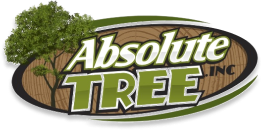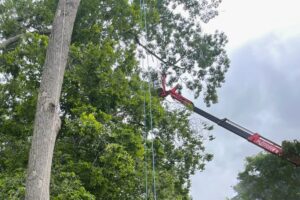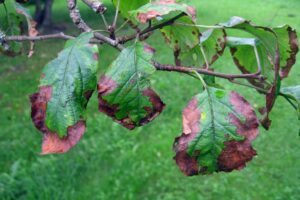The recent Dominion Energy tree removal project along the W&OD Trail has reminded Northern Virginia homeowners how quickly tree safety becomes a community concern. As winter storm season approaches, trees surrounding your Alexandria, Arlington, or Fairfax property face their most challenging months ahead.
Even healthy-looking trees can fail under the weight of ice and high winds. A slight lean or hairline crack that seems harmless now can become a major hazard once freezing temperatures and storm pressure set in.
Key Takeaways
- Structural cracks, excessive leaning, or fungal growth require professional assessment within 48 hours.
- Dead branches throughout the canopy indicate systemic problems that make trees vulnerable to winter damage.
- Trees positioned to hit your home, power lines, or neighbor’s property need immediate evaluation.
- Winter removal costs significantly less than emergency removal during or after storms.
- Professional assessment prevents manageable problems from becoming catastrophic failures.
7 Critical Warning Signs Your Tree Needs Immediate Removal
While trees may not have a flashing neon sign that alerts you to the fact they’ve become dangerous, there are warning signs every homeowner should know. Catching these signs may allow you to save a tree or preemptively remove it before it comes crashing down on your property.
1. Visible Structural Cracks or Cavities in the Trunk
Structural cracks represent the most serious warning sign that removal cannot wait. Look for these critical patterns:
- V-shaped crotches where the trunk splits into major stems
- Vertical bark separation wider than a quarter inch
- Horizontal cracks extending around the trunk circumference
- Spiral cracks indicating internal wood fiber failure
Winter ice loading exploits these weak points, often causing sudden failure without warning. In Alexandria’s historic districts with narrow streets, structural failures can block emergency vehicle access and damage multiple properties.
“We’ve seen too many homeowners wait until spring to address structural cracks, thinking winter weather won’t affect their tree. But winter is precisely when these cracks become the most dangerous. Ice accumulation and wind loading turn a manageable problem into an emergency that could have been prevented with immediate action.” -Ashley Davis, Owner of Absolute Tree Service
Cavities indicate advanced decay that worsens rapidly in winter weather. Even small cavities expand dramatically when water freezes inside, creating internal pressure that splits trunks from within.
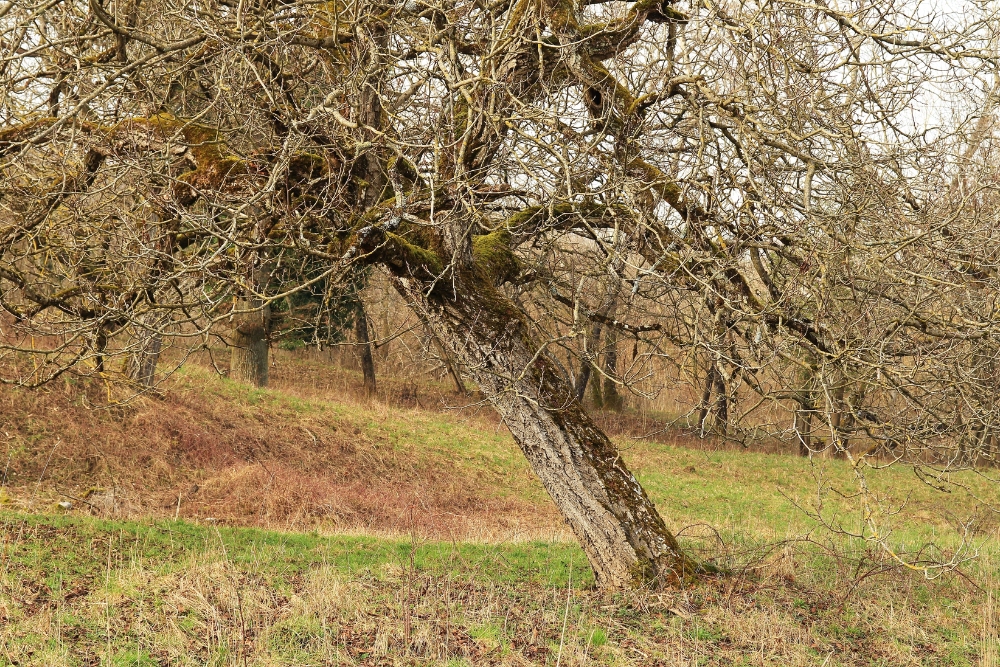
Excessive leaning like this indicates root system failure and creates immediate risk during Northern Virginia’s winter weather.
2. Excessive Leaning or Recent Position Changes
Trees leaning more than 15 degrees from vertical pose immediate risks, especially in Northern Virginia’s clay-rich soils that become unstable when saturated. Watch for:
- Soil mounding on the opposite side of the lean
- Root exposure from soil erosion
- Cracks radiating from the tree base
- Recent grade changes within 100 feet
These signs reveal root plate movement, indicating that the anchor system is already failing. When winter rains saturate soils and freeze-thaw cycles begin, root systems lose their grip entirely.
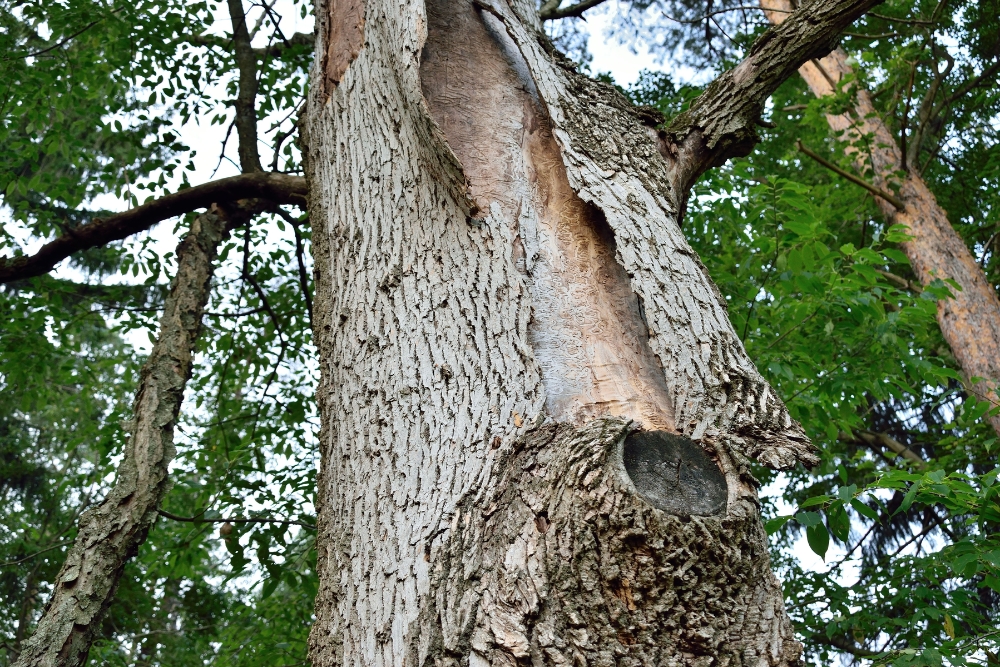
Insect damage can reside under the surface of a tree and leave it a hazard for your property.
3. Insect Damage or Disease Compromising Structure
Critical threats requiring immediate attention include:
- Emerald Ash Borer: D-shaped exit holes and crown dieback make ash trees extremely dangerous
- Scale Insect Infestations: Heavy infestations cause branch dieback and structural decline
- Dutch Elm Disease: Rapid wilting indicates fatal vascular damage
- Oak Wilt: Blocks water transport, causing rapid structural decline
- Canker Diseases: Create failure points during winter storms
Disease progression accelerates during dormant seasons when trees cannot actively defend themselves.
PRO TIP: Virginia Cooperative Extension tree health resources provide detailed information on identifying common diseases affecting Northern Virginia trees.

Winter storm damage like this broken branch demonstrates why compromised trees become extremely dangerous during ice and snow events.
4. Dead or Dying Branches Throughout the Canopy
Widespread branch decline signals systemic health problems that compromise structural integrity. Unlike single dead branches, multiple dead branches indicate stress, disease, pest damage, or root problems affecting the entire tree.
Deadwood becomes brittle during winter weather. Ice accumulation adds enormous weight to branches that can no longer flex with the wind, causing sudden snapping that creates dangerous falling debris. After storm events, knowing how to remove tree debris safely becomes important for preventing additional injuries from cleanup attempts.
Professional winter identification requires a professional assessment, since dormant trees naturally lack leaves. Understanding dead patches in tree canopies helps homeowners recognize when branch death indicates broader problems.
5. Root System Damage from Construction or Soil Changes
Construction damage often doesn’t show symptoms for 2-3 years, but the decline progresses rapidly once it begins. Soil compaction, grade changes, or utility trenching damages feeder roots that cannot regenerate adequately.
Soil level changes greater than 2 inches suffocate existing roots, and trees showing signs of construction stress (such as reduced leaf size, early fall coloration, or branch dieback) rarely recover and become progressively dangerous. Urban tree removal complications require specialized equipment and expertise to navigate safely, especially when construction damage has weakened root systems.
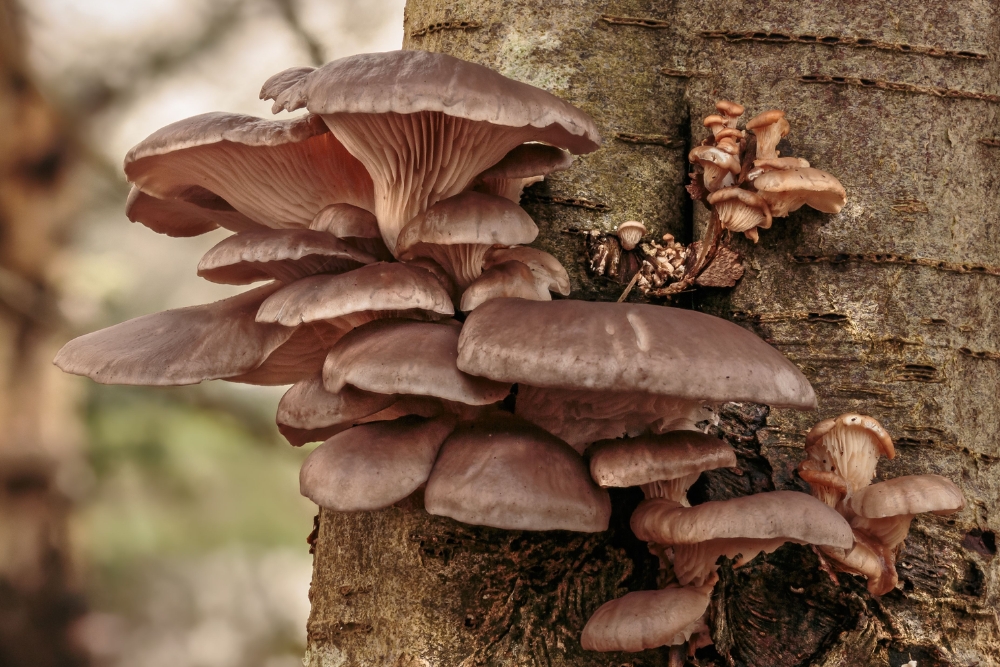
Shelf fungi like these indicate extensive internal decay that makes trees extremely dangerous during winter storms. Photo courtesy of Dominicus Johannes Bergsma, CC BY-SA 4.0, via Wikimedia Commons.
6. Fungal Growth or Decay at the Base
Mushrooms, conks, or shelf fungi around the tree base indicate advanced root decay threatening stability. Different fungi indicate specific decay types:
- Mushrooms signal extensive root system decay
- Shelf fungi indicate internal wood decay
- White rot creates stringy decay, destroying structural components
- Brown rot produces crumbly wood that fails suddenly
By the time fungi appear externally, internal damage is usually extensive and irreversible. The difficulty of removing old trees increases significantly when decay has progressed to visible fungal growth.
7. Trees Positioned for Catastrophic Property Damage
The most dangerous trees aren’t always the biggest – they’re the ones in decline and positioned close enough to cause severe damage if they fail. Assess immediate risk by considering:
- Tree Height: Trees that could reach structures when they have defects
- Multiple Targets: Trees threatening your house, driveway, or neighbor’s property
- Power Line Proximity: Any tree that could contact utilities during failure
- Emergency Access: Trees that could block driveways during failure
In mature neighborhoods, this scenario threatens entire blocks during severe weather. When to cut down trees becomes critical when proximity makes failure catastrophic regardless of health.
Frequently Asked Questions About Winter Tree Removal
Why is winter the best time for tree removal?
Winter offers frozen ground protection, better equipment access, reduced disease transmission, easier scheduling, and often cost savings compared to peak season pricing.
Do I need permits for emergency tree removal in Alexandria?
Emergency removal for immediate safety threats typically doesn’t require permits, but documentation is necessary. Planned removal of trees over 15 inches in diameter may require permits. Review Alexandria tree ordinance requirements for specific regulations.
What should I do if my tree is near power lines?
Never attempt removal near power lines yourself. Contact Dominion Energy at 1-866-366-4357 for trees threatening power lines. Professional coordination ensures safe disconnection procedures.
Do I need HOA approval for tree removal?
Many homeowner’s associations have specific requirements for tree removal. Understanding HOA tree removal procedures can prevent delays and ensure compliance with community guidelines.
How should I prepare for tree removal?
Preparing for tree removal involves clearing access routes, protecting nearby plants, and coordinating with neighbors. Proper preparation ensures safer, more efficient removal.
Don’t Wait Until It’s Too Late – Have Absolute Tree Remove Your Dangerous Trees Today
Don’t wait for winter storms to make this decision. Absolute Tree Service has helped Northern Virginia homeowners navigate these safety decisions for 19 years. Our Certified Arborists understand the unique challenges of the region’s historic neighborhoods and mature urban forests.
Schedule your emergency tree assessment today by calling 703-969-6207 or request an estimate online. We respond quickly to safety concerns and often schedule winter removal within days of assessment. Protect your property with professional tree removal when it’s safer and more affordable to act.
For the Absolute Best Tree Service in Northern Virginia, call Absolute Tree Today!
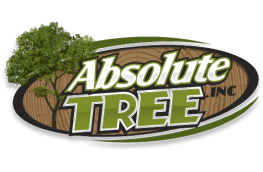
Author Profile: Ashley Davis
Over the last 19 years, Absolute Tree has grown a reputation as one of the premier tree service companies in the Northern Virginia areas. And there’s a good reason for this—we love trees and our passion for them shows. When you call on Absolute Tree for tree service, you aren’t just getting “some guys who cut down trees.” You’re hiring highly skilled arborists who understand the growth of trees and consider tree care an art form.
Stay Up-to-date!
Swing in each month for new articles, pest alerts, local resources, tree care tips, tree health updates, and landscape maintenance ideas
